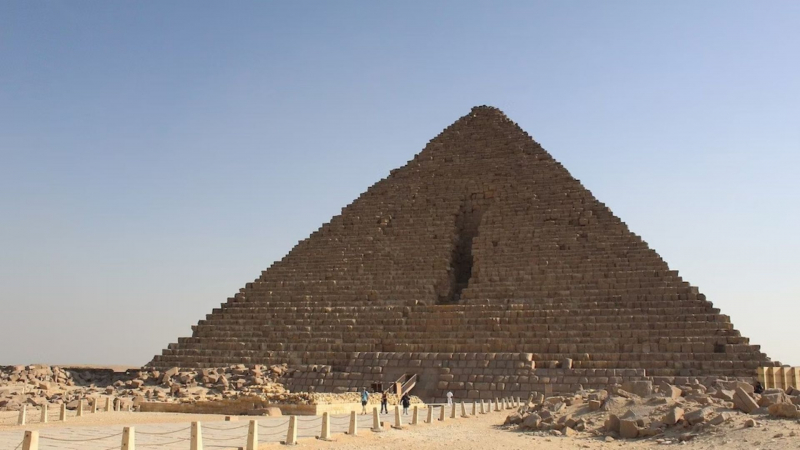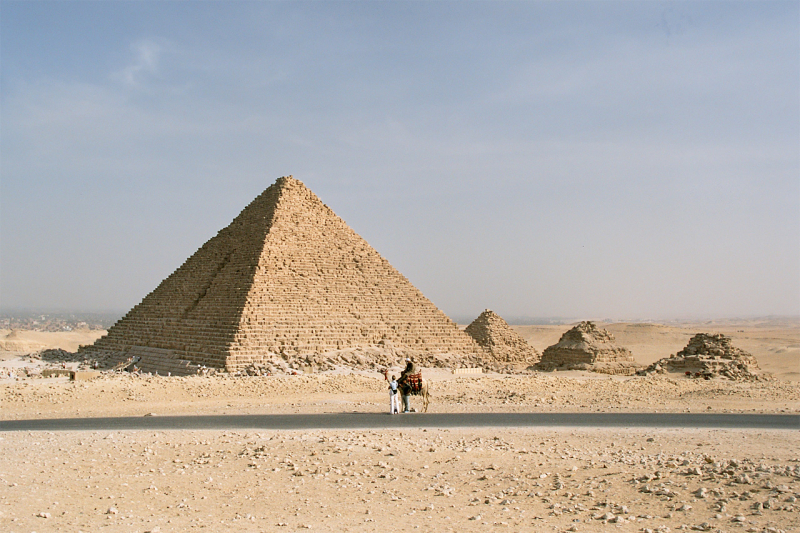Pyramid of Menkaure
The Pyramid of Khufu, the Pyramid of Khafre, and the Pyramid of Menkaure are the three main monuments that are usually mentioned when someone mentions the Pyramids of Giza. The Pyramid of Menkaure is by far the smallest of the three. However, it plays a significant role in Giza's design, and if you're in the vicinity, it's definitely worth a trip.
This 65-meter-high pyramid was built in 2510 BC for Pharaoh Menkaure of the Fourth Dynasty (213 feet). This makes the Pyramid of Menkaure nearly half the height of its neighbors. The materials used in the construction of the Pyramid of Menkaure were red granite in the pyramid's base and limestone near the summit. Because parts of the granite in the pyramid were left unpolished, archeologists and historians believe the pyramid was unfinished.
You might observe that one side of the Pyramid of Menkaure is lacking a vertical strip of stones if you were to gaze at it now. Surprisingly, that is the end outcome of Saladin's son's determined efforts to destroy the pyramid in the 12th century. Fortunately, the procedure was time-consuming and expensive, and it was finally dropped. The lost stones serve as a poignant reminder of both the endurance of the pyramids and the value of maintaining these kinds of historical sites.
You'll descend stairs to enter a corridor as you enter the Pyramid of Menkaure. The first antechamber is then reached, followed by sculpted reliefs in the walls and an opening into another chamber. As you enter the main sequence of rooms, you'll have a unique view of the pyramid's arched pinnacle, a breathtaking sight that you have to see to believe.
Location: the Giza Plateau in the southwestern outskirts of Cairo














